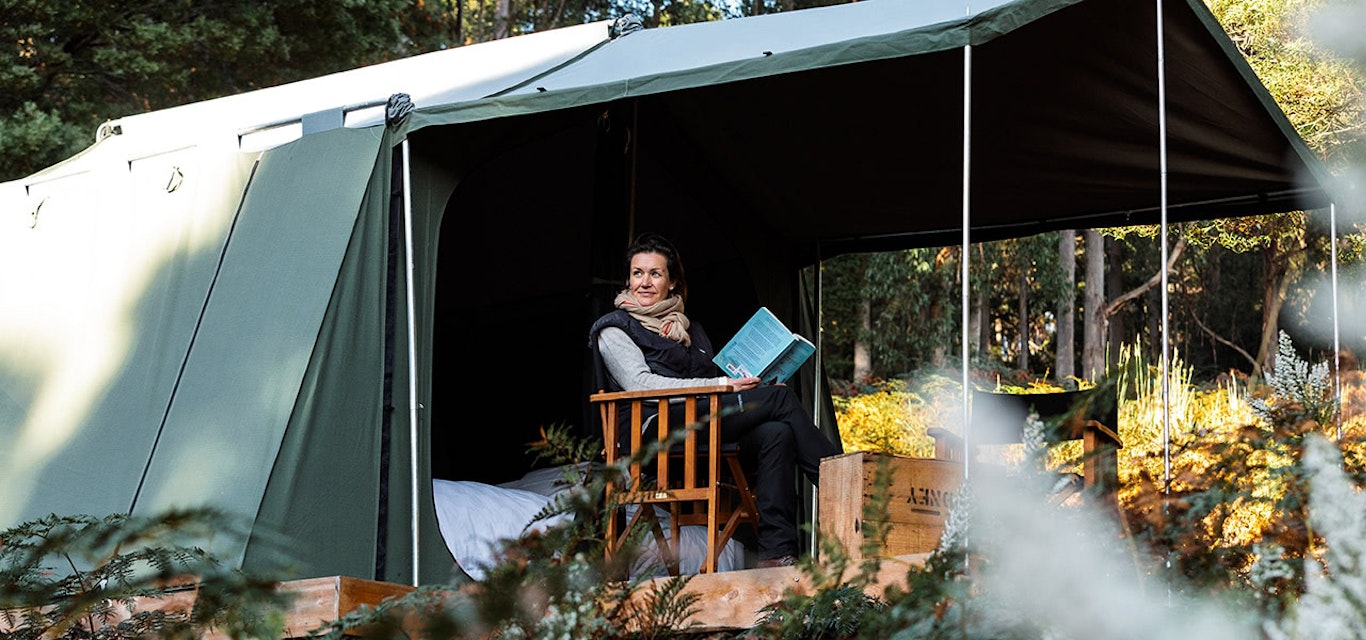A walk on the wild side
Popular among daytrippers who make the pilgrimage south for cheese, wine and wildlife, Bruny Island also offers plenty of reasons to linger. Lace up your hiking boots for a long weekend spent exploring this postcard-perfect Tasmanian isle.
A wind whips along Neck Beach, sending sand sideways into the ocean and reminding me just how close we are to Antarctica. From here – a deliciously deserted beach on the east coast of Tasmania’s Bruny Island – there’s only 3000 kilometres to the icy southern continent. On days like today, when muttonbirds burrow into their nests and a salty sea spray dimples my cheeks, it feels even closer. Our group of eight follows guide Rob Knight up a vertiginous cliff track carved through scrub, she-oaks and casuarinas, Gore-tex jackets zipped high and cameras at the ready.
It’s our first morning here as part of the Bruny Island Long Weekend, a food-focused affair broken only by heart-starting hikes followed by luxurious lie-ins ensconced in glamping tents. Many visitors to Tasmania make the 45-minute pilgrimage south from Hobart to spend a few hours cruising Bruny’s spectacular coastline or savouring wine, cheese and oysters. But few get to experience the island’s rugged heart and dramatic remote beaches for more than a day – we have them almost entirely to ourselves for three.
Gourmet wanderings
Our first day marching along east coast trails is a glorious introduction to Bruny’s flora and fauna. The island is home to 150 species of birds, including all 12 endemic to Tasmania, and also has the world’s largest population of endangered forty-spotted pardalote. And then there are those muttonbirds, 240,000 breeding pairs at any given time. Behind the enormous coastal dunes of Neck Beach we discover a dilapidated hut that muttonbird hunters once used as a refuge between expeditions. Today, it’s the perfect perch to boil a billy and refuel with hot chocolate and dense brownies.
Knight and his team use mealtimes as a way to showcase the island’s incredible produce bounty, which we get a taste for later in the day back at the Long Weekend’s base. Set on a dreamy patch of eucalypt-laced bushland in the foothills of Mount Mangana, the campground’s four safari-style tents and the main lodge are completely off-grid. But the focus on sustainability doesn’t come at the expense of style, and our accommodations come fitted with plush double beds and cosy linens, with hot waterbottles slipped between the sheets when it comes time to turn off our torches.
Most indulgent of all is the large alfresco shower, a semi-open pavilion set at the end of a ferny path. Steaming water falls while I gaze out over a dense tangle of forest. The only sounds are the patter of droplets hitting the ground and the chatter of birds high in the canopy above.
While we warm up, Knight prepares a meal that has an almost non-existent travel footprint: oysters plucked from the surrounding sea, gooey cheeses made just up the road, a plummy pinot noir pressed nearby at the world’s most southern vineyard. There are Spring Bay mussels steamed in a white wine and saffron sauce, a rump of Murryfield lamb atop quinoa salad, and a satisfyingly wobbly leatherwood honey pannacotta topped with local berries.
Southern exposure
Day two’s 12km walk takes us up East Cloudy Head on Bruny’s wind-sculpted southern coast. We scuff along the sand, barefoot and on the lookout for shells and sea creatures that have washed ashore, and then scale scrubland to a lookout affording views of Tasmania’s remotest reaches.
Bruny is actually two masses connected by a long, sandy isthmus. In contrast to the north, the island’s southern shore is hilly and heavily forested. It’s home to a national park and state reserve, not to mention the Cape Bruny Lighthouse, Australia’s second-oldest extant lighthouse.
Our final day is also spent in the rainforest, on the watch for Bruny’s white wallabies – we spot half a dozen of the rare macropods, which are not to be confused with the island’s albino wallaby population. Climbing Mount Mangana, the island’s highest point gives us some perspective of the Jurassic coastline, where staggering dolerite sea cliffs provide a harbour for sea eagles and albatrosses that wheel in the wind. Just offshore are rocky pinnacles home to rare nesting seabirds, including little penguins and short-tailed shearwaters, as well as thousands of Australian and New Zealand fur seals that use the land as a haul-out site.
From up here there’s no hiding how remote we really are. There are no roads, no houses, no streetlights and no other people. There’s nothing, except the Tasmanian wilderness at its most raw and extreme.
Fast facts
The Bruny Island Long Weekend experience begins and ends in Hobart, with trips running from October through April. Rates start at $1,695 per person and include two nights’ accommodation in luxury safari tents, all food and wine, national park passes and return transfers to Hobart via private boat. Group size is capped at eight with two guides. Expect to hike for around five to six hours on each of the first two days, and around three hours on the final day. A moderate level of fitness is required.
